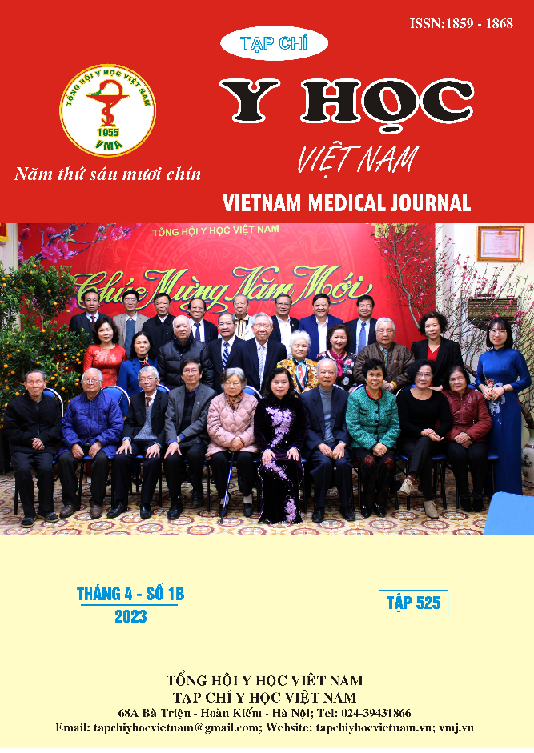OUTCOME OF SUPRACONDYLAR FEMUR FRACTURES TREATMENT WITH LOCKING PLATE USE LESS INVASIVE STABILISATION SYSTEM AT NGHE AN TRAUMA AND ORTHOPAEDIC HOSPITAL
Main Article Content
Abstract
Background: Supracondylar femur fractures is a trauma large, complex fractures, which often affects to the motor function of the knee. The locking compression plates for supracondylar femur fracture helps firmly fix, early rehabilitation. Besides, using Less Invasive Stabilisation System preserving the soft tissue and nurturing it, creates good conditions for bone healing and aesthetic. Objectives: Outcome of supracondylar femur fracture managed by locking compression plate use Less Invasive Stabilisation System (LISS) at Nghe An Trauma and Orthopaedic Hospital. Subjects: 40patients: 10 males, 30 females, from 17 to 92 ages, with diagnosis supracondylar femur fracture, were treated by locking plate in Less Invasive Stabilisation System at Nghe An Trauma and Orthopaedic Hospital from May 2020 to March 2023. Methods: Prospective, clinical description without control group, sectional description and follow-up. Results: Short-term results: 100% primary wound healing. Long-term results: 27.79% excellent, 61.11 % good, 5.55 % average, 5.55% poor. Complications: limitation of knee flexion (<900): 2 patients (5.55%), malalignment: 5 patient (13.89%), non-union 0 patient. Conclusion: Locking plate osteosynthesis has many advantages, besides using Less Invasive Stabilisation System techniques achieve positive results, high efficiency, early rehabilitation as well as avoid muscular atrophy, knee stiffness.
Article Details
Keywords
Supracondylar femur fracture, locking plate fixation, Less Invasive Stabilisation System, LISS
References
2. HữuTrương Trí HNT. Đánh giá kết quả bước đầu điều trị gãy đầu dưới xương đùi bằng nẹp vít khóa. Tạp chí chấn thương chỉnh hình Việt Nam. 2014;Số đặc biệt:178-83.
3. Quế VH, Vũ VK, Vũ TT. Đánh giá kết quả phẫu thuật kết hợp xương nẹp vít khóa điều trị gãy đầu dưới xương đùi ở người trưởng thành có sự hỗ trợ của màn tăng sáng. Tạp chí Y học Việt Nam. 2021;509(2).
4. Hoàn Ngô Quốc TNĐ. Đánh giá kết quả ban đầu điều trị gãy kín đầu dưới xương đùi bằng phẫu thuật kết xương nẹp khóa. Tạp chí y dược thực hành 175. 2020;2(6):75-84.
5. Kregor PJ SJ, Zlowodzki M, Cole PA. Treatment of distal femur fractures using the less invasive stabilization system: surgical experience and early clinical results in 103 fractures. J Orthop Trauma. 2004;18(8):509-20.
6. M Hosam N, Emad EM, Khaled I. Buttress-condylar plating in treatment of intercondylar supracondylar fractures of distal femur. 2007.
7. Handolin L, Pajarinen J, Lindahl J, Hirvensalo E. Retrograde intramedullary nailing in distal femoral fractures—results in a series of 46 consecutive operations. Injury. 2004;35(5):517-22.
8. Siliski JM, Mahring M, Hofer H. Supracondylar-intercondylar fractures of the femur. Treatment by internal fixation. JBJS. 1989;71(1):95-104.
9. Doshi HK, Wenxian P, Burgula MV, Murphy DP. Clinical outcomes of distal femoral fractures in the geriatric population using locking plates with a minimally invasive approach. Geriatric orthopaedic surgery & rehabilitation. 2013;4(1):16-20.


